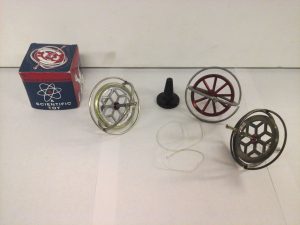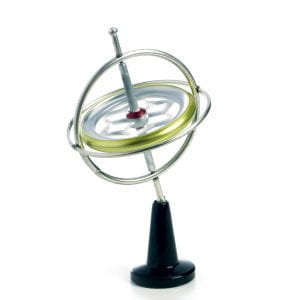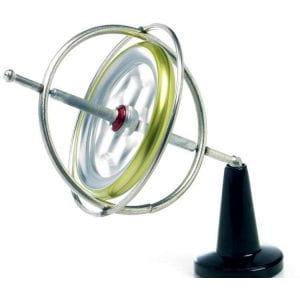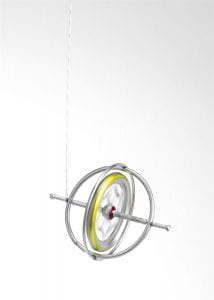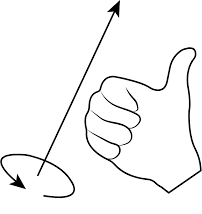An assortment of toy gyroscopes for demonstrating rotational motion.
Materials:
- Gyroscope(s)
- String
- Small stand (optional)
Demo:
- Put one end of the string through the small hole on one of the axles.
- Carefully wind the string around the axle by spinning the gyroscopes wheel, until a small portion of string large enough to hold is left.
- Quickly pull the string.
Experiment 1:
- Place the gyroscope on the plastic stand vertically, or horizontally.
Experiment 2:
- Hold both ends of the string used to get the gyroscope spinning in one hand, while holding the spinning gyroscope in the other.
- Carefully place one of the arms of the gyroscope in the loop of the string, and watch as it slowly precesses around while remaining horizontal.
Explanation:
A gyroscope’s ability to remain upright in such a striking manner is the result of the angular momentum of the spinning wheel. Just as a moving object traveling in a straight line has moment, so too does a spinning disk. The direction of the angular momentum can be found using the right hand rule. Start by placing the fingers of your right hand in the direction the disk is rotating, and see where your thumb points, as this is the direction of the angular momentum vector (figure 1).
This vector shows that the gyroscope will remain upright, because its momentum vector is pointing vertically, and will not change due to the conservation of momentum. Of course, outside influence like friction and gravity reduce the speed of the disk until its angular momentum vector is reduced to a point where it is overcome by gravity.
